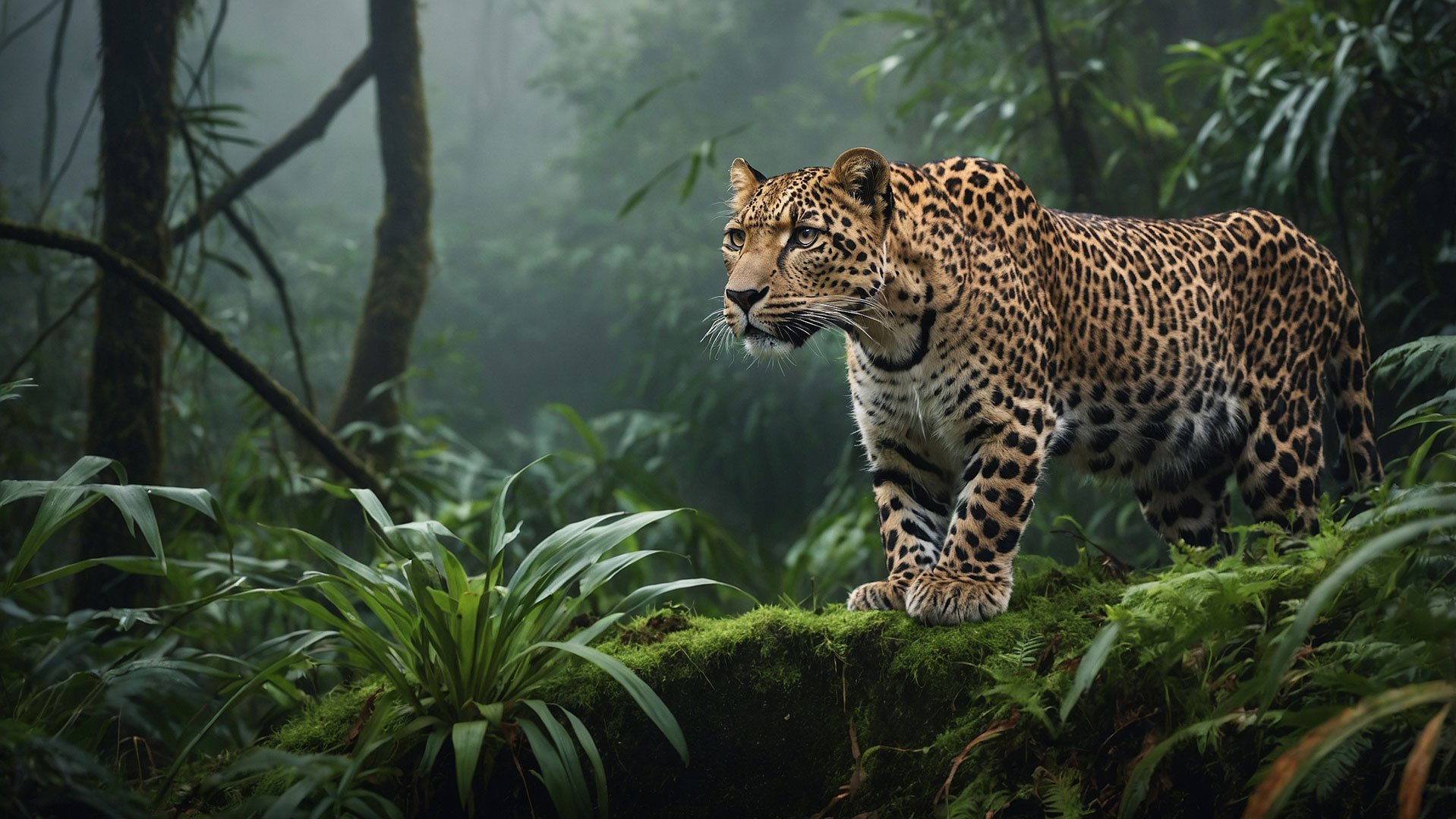The Silent Struggle: Coexistence and Conflict Between Humans and Carnivores in Sri Lanka’s Central Hills
Deep in the heart of Sri Lanka’s central hills, where mist clings to the emerald canopy and the rhythmic calls of wildlife echo through the valleys, an ancient struggle continues—a struggle between humans and the wild carnivores that share their land. Leopards, civets, and mongoose roam these forests, each playing an irreplaceable role in maintaining the delicate balance of their ecosystems. Yet, for many people living near the Dunumadalawa Forest Reserve, these predators are more than just symbols of nature’s raw beauty; they are perceived threats, instigators of conflict, and subjects of deep-seated fear and misunderstanding.
A Land of Rich Biodiversity and Rising Tensions
Sri Lanka is home to 94 terrestrial mammal species, including 14 carnivores. Among them, the Sri Lankan leopard, rusty-spotted cat, and fishing cat stand out as elusive yet charismatic predators. These creatures have long roamed beyond the bounds of protected areas, coming into close contact with human communities.
In a recent study conducted around the Dunumadalawa Forest Reserve, researchers sought to understand how local people perceive and interact with these carnivores. Their findings were both eye-opening and concerning: while nearly all respondents could identify at least one carnivore, only a small fraction recognized multiple species. This gap in knowledge influences attitudes, leading to misunderstandings and, in many cases, hostility toward these wild animals.
Fear, Loss, and a Declining Connection to Nature
For many residents, leopards are both revered and reviled. While 56% of respondents expressed admiration for leopards—likely due to their striking appearance and cultural significance—a substantial number viewed them as a direct threat. Reports of livestock predation, missing pets, and economic losses have cemented negative perceptions of these big cats, with many believing that relocation is the only solution.
The civet, another key species in the ecosystem, faces even greater animosity. Over 74% of respondents exhibited negative attitudes toward civets, seeing them as pests rather than valuable contributors to biodiversity. Yet, civets play a crucial role in controlling insect populations and seed dispersal, helping to regenerate forests and maintain ecological balance.
A Glimmer of Hope: Changing Perspectives and Conservation Efforts
Despite the conflicts, there is hope. Encouragingly, 68% of those surveyed believe that human-carnivore conflicts have decreased over the past two decades. This shift could be attributed to conservation awareness, legal protections, and community engagement in wildlife preservation efforts.
However, a significant challenge remains—73% of respondents had no clear idea how to mitigate these conflicts. Without effective education and resources, fear and misinformation will continue to drive human-wildlife tensions.
The Path Forward: Learning to Coexist
The survival of Sri Lanka’s carnivores depends on more than just legal protections; it requires a cultural shift in how people perceive and coexist with these magnificent animals. Strengthening conservation education, promoting non-lethal deterrents, and implementing compensation schemes for livestock losses can help bridge the divide between humans and wildlife.
For those of us far from Sri Lanka’s misty hills, the lesson is just as crucial. Whether it’s advocating for stronger wildlife protections, supporting conservation programs, or simply educating ourselves and others about the role of predators in nature, every action matters.
Be a Voice for the Voiceless
Big Cat Rescue has long championed the protection of wild cats and their habitats. With continued efforts, we can foster a world where humans and carnivores coexist in harmony rather than conflict. Support conservation today—because when the wild thrives, so do we all.
Read the entire report here:
https://www.sciencedirect.com/science/article/pii/S2351989425000770?fbclid=IwZXh0bgNhZW0CMTEAAR0VvDjnN9H5vRNgswq_R03bhhzmj1GwWDv88F3MJWZCaKgOryA77VR8oSA_aem_9K6mSpw6VWtwpbbsihmM-g















